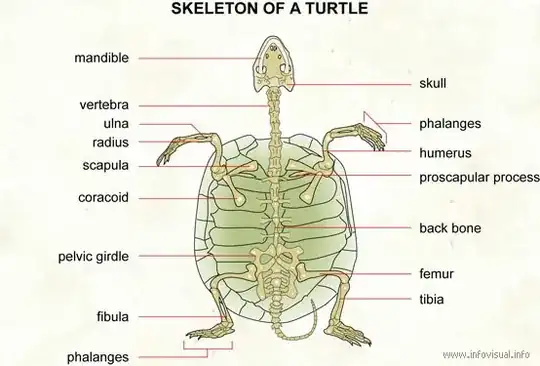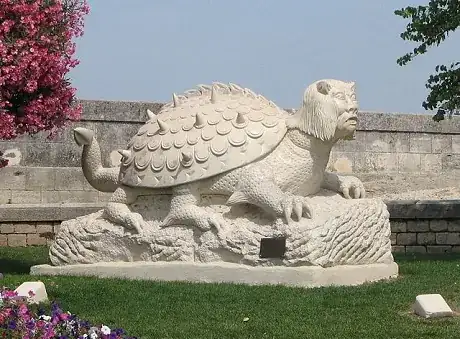For starters, The shell is far too short.
Out of all the chimeric components, the turtle aspect seems to be the most problematic. Tortoises are known for their ability to retract their legs into their shells, but they are not actually retracting the legs INSIDE the shell. They just tuck them against their shell and voilà, legs protected.


To be anatomically accurate, the Tarasque's shell should be slightly longer to accommodate for the extra pair of legs. Please bear in mind that the gap necessary to tuck in each limb only needs to be the length of the 'forearms' of the Tarasque. Similarly, a longer shell means more room for the rest of the limbs.
Next, the scorpion tail.
The scorpion tail is the only non vertebrate component of the Tarasque, which means it needs a different anatomy to work. The outer shell covering the tail can just be chitin or fused scales. For the bone structure underneath I suggest the seahorse.

Not only is this structure highly resistant but it also protects the tail (the only appendage that can't be completely tucked in) from harm. It also serves as an exoskeleton which combined with scales makes the tail very sturdy. Going for a snake-like tail removes this issue but most Tarasques are depicted with a full on scorpion tail.
The organ placement isn't an issue.
Depending on what kind of shell the Tarasque has there are different solutions. Firstly a full tortoise shell, complete with both the carapace and plastron, would have the exact same organs as a tortoise would. We already have giant Galapagos tortoises so a Tarasque is not beyond belief.
Second, an 'exposed' reptilian stomach would make the organ placement much simpler. For the simple reason that the legs can now be tucked underneath the shell and not on the sides. Many mammals do it and make it seem like they have no limbs at all. Again, not beyond belief.
(Bonus) Spiky shells are a thing.

Not quite like Bowzer, the Black-Knobbed Map Turtle comes close with a similarly spiky shell.




